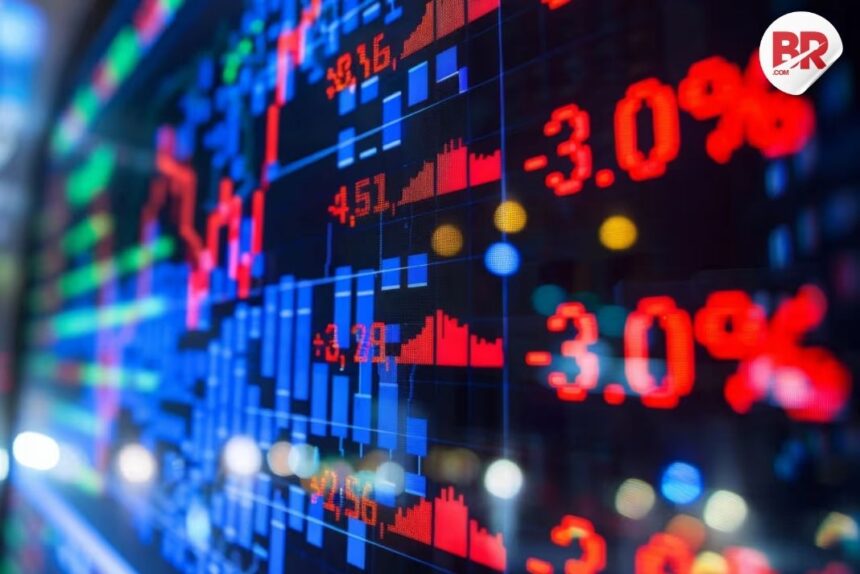
The Trade War Reaches a Dangerous New Level
The economic conflict between the U.S. and China entered uncharted territory on April 9, 2025, when the Trump administration imposed 104% tariffs on Chinese imports—the highest rate in modern history. This drastic measure didn’t just escalate tensions; it detonated a financial shockwave across global markets.
Within hours, stock markets tumbled, currencies fluctuated wildly, and investors scrambled for cover. The move marks a critical turning point in what was already the most volatile trade relationship of the 21st century.

Asia Bears the Brunt of the Blow
As the first markets to open after the announcement, Asian exchanges absorbed the initial impact:
- Japan’s Nikkei plunged 3.6%, wiping out its 6% gain from earlier in the week—the sudden reversal stunned investors who had bet on easing trade tensions.
- Taiwan’s TWII cratered 4.6%—a remarkable drop considering the government activated a $15 billion stabilization fund to cushion the blow.
- Hong Kong’s Hang Seng fell 1.6%, while mainland China’s CSI300 eked out a 0.3% gain, thanks to aggressive intervention by Beijing.
The damage wasn’t limited to equities. JPMorgan analysts warned that the tariffs could single-handedly push the global economy into recession. “This isn’t just a trade barrier—it’s a $400 billion tax on American consumers and businesses,” they wrote in a client note.
Also Read: Chinese Premier Responds to Trump’s 104% Tariffs: ‘China Is Ready to Handle It’
The Panic Spreads to Western Markets
By the time European and U.S. markets opened, the selloff had turned into a full-blown rout:
S&P 500 futures dropped 1.6%, extending a four-day losing streak that erased $5.8 trillion in market value—the worst decline since the 1950s.
Euro Stoxx 50 futures signaled a 3.7% plunge at the open, with analysts warning of deeper losses ahead.
Currency and Bond Markets in Turmoil
The U.S. tariffs on China sent shockwaves through global financial systems:
- The yuan plummeted to 7.3499 per dollar, its weakest level since the 2007 financial crisis.
- U.S. Treasury yields spiked violently, with the 10-year yield soaring 51 basis points in just three days—an unprecedented move signaling panic in bond markets.
- Safe-haven currencies surged, with the Japanese yen gaining 0.8% and the Swiss franc up 0.5% as investors fled riskier assets.
The turmoil forced central banks to act. The Reserve Bank of New Zealand slashed interest rates by 25 basis points, citing “severe risks to global growth” from the trade war.
Also Read: Trade Wars + Recession = Oil Crash? Goldman Warns Market Shift
What Comes Next?
With neither Washington nor Beijing showing signs of backing down, economists predict:
- Extended Market Volatility – Supply chain disruptions and tariff-related inflation could keep markets on edge for months.
- Recession Risks Rise – The IMF now estimates a 40% chance of global recession if the tariffs remain in place.
- Gold’s Safe-Haven Appeal – The precious metal jumped 0.7% to $3,005/oz, with analysts predicting further gains.
“We’re witnessing an economic game of chicken with no end in sight,” said Ting Lu, Nomura’s Chief China Economist. “The longer this lasts, the more collateral damage we’ll see.”
Key Takeaways for Investors
- Diversify portfolios – Consider increasing exposure to defensive sectors like utilities and consumer staples.
- Monitor currency risks – The yuan’s slide could impact multinational corporations with Chinese operations.
- Watch for central bank moves – Further rate cuts or stimulus packages may offer short-term relief.
Also Read: Turn a Recession into Your Big Break: Smart Moves to Thrive in Tough Times












